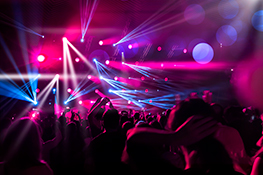## Stage Lighting: Your Complete Guide to Illumination
For stagelights.in
Understanding the Fundamentals of Stage Lighting
Stage lighting is more than just illuminating a stage; it’s a powerful storytelling tool. It sets the mood, directs the audience’s attention, and enhances the overall theatrical experience. This guide will delve into the intricacies of stage lighting, covering everything from basic principles to advanced techniques. Whether you’re a seasoned professional or a budding enthusiast, you’ll find valuable insights to elevate your productions.
Types of Stage Lighting Fixtures: A Comprehensive Overview
The world of stage lighting fixtures is vast and diverse. Each type serves a unique purpose and contributes to the overall lighting design. Let’s explore some key categories:
- Ellipsoidal Reflector Spotlights (ERS): Known for their sharp, focused beams, ERS lights are ideal for highlighting specific actors or objects. Their ability to accept gobos (metal templates creating patterns) adds versatility.
- Fresnel Lights: Producing a soft, diffused light, Fresnel lights are perfect for washes and creating ambient atmosphere. Their adjustable focus allows for variable beam size.
- PAR Cans: These robust lights offer powerful, wide-angle illumination, often used for backlights or washes. They are typically less versatile than ERS or Fresnel lights.
- LED Lighting: Energy-efficient and versatile, LED lights are rapidly becoming the industry standard. They offer a wide range of color temperatures and are highly controllable.
- Moving Heads: These automated fixtures offer precise control over beam direction, color, and gobo patterns, providing dynamic and eye-catching effects.
Color Mixing and Gel Filters: Mastering the Art of Hue
Color plays a crucial role in setting the tone and atmosphere of a performance. Understanding color mixing and gel filters is essential for any lighting designer. This section will cover color temperature, color mixing techniques, and the practical applications of various gel filters to achieve specific effects.
Lighting Design Principles: From Concept to Execution
Effective stage lighting isn’t simply about illuminating the stage; it requires a strategic approach. We’ll discuss key design principles, including:
- Motivation: How the lighting realistically reflects the setting and action.
- Focus: Guiding the audience’s eye to the most important elements.
- Mood and Atmosphere: Using light to evoke specific emotions and feelings.
- Composition: Arranging light sources to create visually appealing patterns and contrasts.
Advanced Lighting Techniques: Pushing the Boundaries of Illumination
Beyond the fundamentals, this section explores advanced techniques to enhance your lighting designs. We’ll discuss:
- Special Effects: Creating stunning visual effects using gobos, prisms, and other tools.
- Light Plotting and Programming: Utilizing lighting consoles for precise control and automation.
- Working with Video and Projections: Integrating lighting with other visual media for a cohesive presentation.
Choosing the Right Lighting Equipment: A Buyer’s Guide
Selecting the appropriate lighting equipment for your needs is crucial. This section provides guidance on factors to consider when purchasing stage lighting, including budget, venue size, and the type of production.
Safety Precautions in Stage Lighting: Prioritizing Safety
Safety should always be the top priority when working with stage lighting. This section covers essential safety measures and best practices to prevent accidents and ensure a safe working environment.
Conclusion: Illuminating Your Creative Vision
Mastering stage lighting is a journey of continuous learning and experimentation. By understanding the fundamentals and embracing innovative techniques, you can transform your productions and captivate your audience. Contact us at stagelights.in for all your lighting needs.


 Auditorium Construction Services
Auditorium Construction Services 